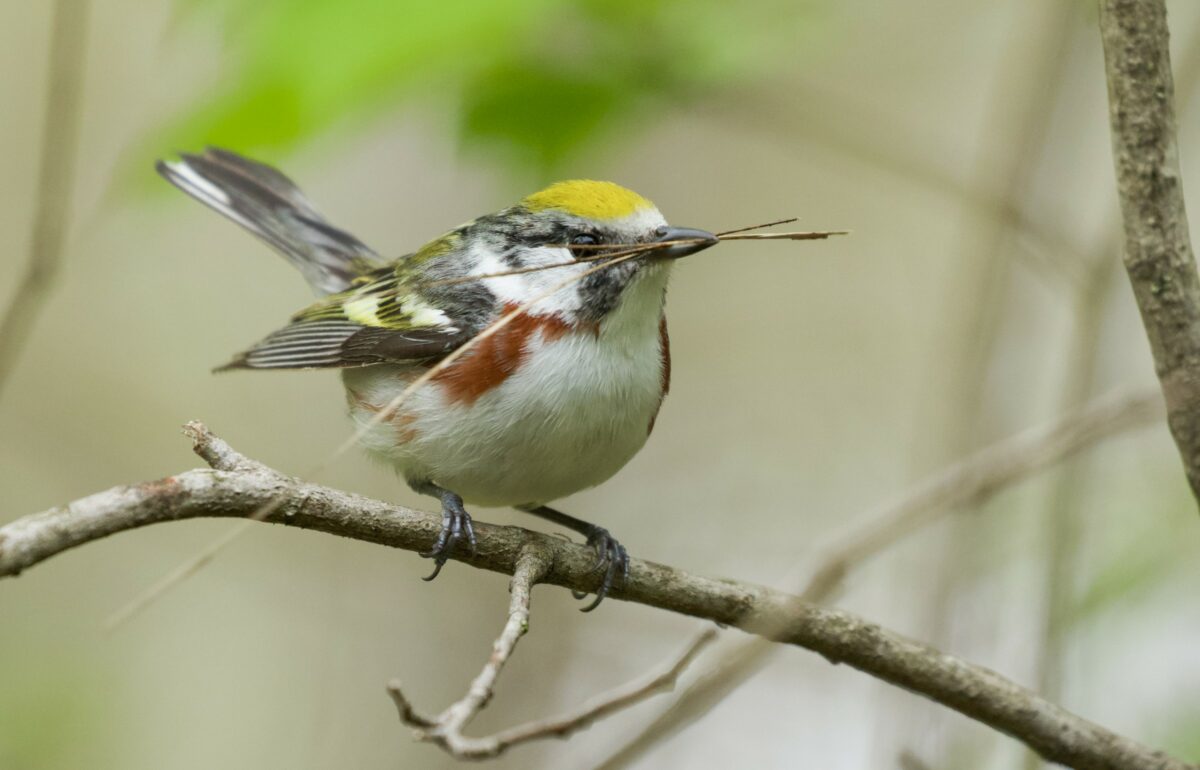
Birds shifting more in time than space as they adjust to global warming
As North America heats up due to climate change, animals are responding in three primary ways: moving north, heading to higher elevations and making phenological changes — adjusting annual cycles such as when they breed.
As North America heats up due to climate change, animals are responding in three primary ways: moving north, heading to higher elevations and making phenological changes — adjusting annual cycles such as when they breed.
A new UCLA study analyzed 27 years of data across 311 land-based species to examine how North American birds have responded simultaneously using all three methods.
Most previous studies have only looked at individual types of responses to climate change. By examining all three primary responses side by side, researchers were able to get a more expansive and accurate picture of how birds — from finches to falcons — are adjusting for climate change.
In general, birds are moving in the same direction: away from the heat. They’re moving north in latitude, up in elevation and starting their breeding seasons sooner, before it gets too hot.
But they’re not adapting far or fast enough to keep pace with climate change. Adjustments made by birds in the study, which was published in Nature Ecology and Evolution, only accounted for one-third of what would be needed to stay on track with the rate of warming.
Most of the changes they did make were phenological, the researchers found. “Of the temperature tracking we’ve observed in birds, 64% is due to phenology tracking alone,” said Monte Neate-Clegg, UCLA ecologist and lead author of the study.
On average, birds are advancing their breeding dates by an average of 0.08 day, he said, which may simply represent the easiest, most efficient method. To make up for a change of one degree Celsius, they start breeding a day sooner, instead of moving 1,000 kilometers to the north or rising a few hundred meters in elevation — and finding suitable new habitat there.
“This is a response we’ve hypothesized before, particularly for birds from California,” said Morgan Tingley, a UCLA professor of ecology and evolutionary biology and senior author of the study. “But now, for the first time, we can see how animals are using multiple ways simultaneously to adapt to climate change, and shifting the timing of key life events may just be one of the first and easiest options.”
This principle is represented in the study, which found that birds, on average, are moving just a small amount spatially: 1.1 kilometers per year northward and 1.2 meters per year upward.
These averages include a large amount of variation. Species such as the lesser goldfinch are rapidly moving north and breeding earlier while others, like the black phoebe, are counterintuitively shifting south and downward, likely due to urbanization, precipitation changes and habitat availability. Thus, some are tracking temperature changes completely, others partially, and some are even moving in the opposite direction than would be expected.
Understanding how birds adapt is crucial for conservation efforts. The fact that they’re changing the timing of their breeding season suggests that strategies should focus not solely on habitat protection but also consider the timing of ecological events and how individual species are changing.
“In order to best target our conservation efforts, we need to know how species are and are not adapting to ongoing climate change,” Tingley said. “While shifting the timing of nesting may help birds in the short term, if they do not move in the long term, greater conservation efforts are likely to be necessary.”
Published:


